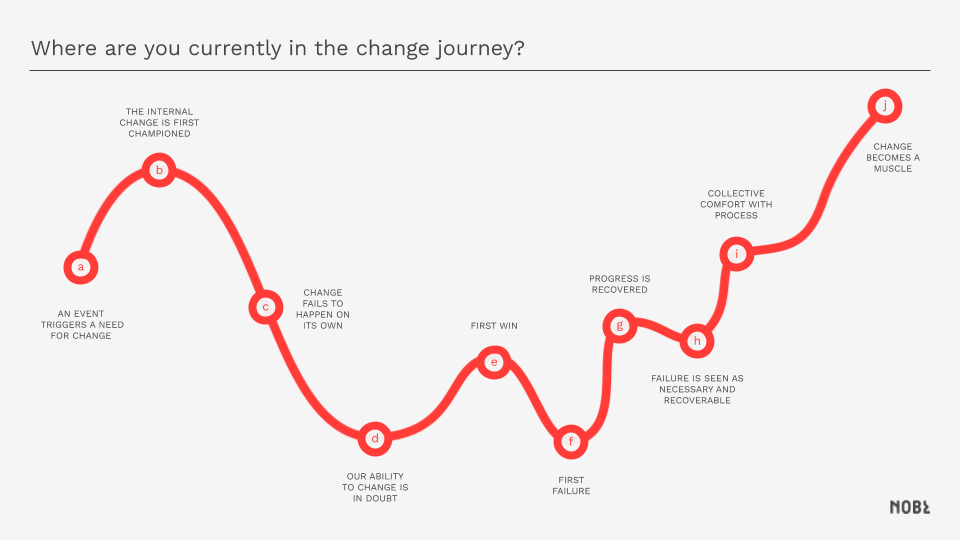When starting any change initiative, we sit down with clients and create “From-To” statements: simple descriptions of where the organization is now, and what it should look like in the future. It’s a useful tool to determine what needs to change and whether teams are moving in the right direction. The catch is that between the “From” and “To,” you are subject to Kanter’s Law: “Everything looks like a failure in the middle.”

Some bumps along the change journey, therefore, are normal and expected. But sometimes, change feels too disruptive, or like it’s stalling out—that teams are stuck in one of the dips. It might look or feel like:
- Increased apathy or outright resistance from the organization at large
- Attention from executives drifting to the next initiative
- Internal momentum and focus within your own team slowing
- Increased personal frustration and bonding with others through venting
- Growing pessimism or disbelief within yourself about the possibility of sustained change
If any of these are the case, it may require innovative leaps, honest reflection, and tough sacrifices to recover personal and organizational momentum. There are no silver bullets, but it may be time to ask yourself:
- Are we being overly ambitious or idealistic? Are we trying to change too many things at once, or aiming too high with each effort? If so, reassess the “To” portion of the “From-To” statement, and find something you can realistically achieve.
- Should we be empowering more rebels and pirates? Are we relying too much on “official channels” and wrongly expecting the current organization to make way for the future? You may have to make some bold moves: for example, NASA overcame a period of dangerous bureaucracy and technical stagnation in the 1980’s by empowering internal “pirates.”
- Are we too tolerant of our change resistors? Are we avoiding conflict when we should be working to either convert or exit resistors swiftly? Change leaders often spend an inordinate amount of time trying to coax along individuals in key positions who actively resist change and frequently promote toxic behavior. Excuses for keeping them around are plentiful—they have keystone roles or hold important relationships—but confronting them directly sends a clear signal to the rest of the organization about the commitment to change.
- Are we what’s actually in the way? Are there conditions on the leadership team, or unaddressed issues in the business, that have to be confronted? We worked with one client who insisted the need for a portfolio strategy was due to a lack of innovation, but after months of stalled efforts, they realized the real issue stemmed from leadership avoiding interpersonal conflict. Take a hard look at how you’re operating, or ask a trusted third-party for a more objective assessment.








The Evolutionary Edge
Every Link Ever from Our Newsletter
Why Self-Organizing is So Hard
Welcome to the Era of the Empowered Employee
The Power of “What If?” and “Why Not?”
An Adaptive Approach to the Strategic Planning Process
Why Culture/Market Fit Is More Important than Product/Market Fit
Group Decision Making Model: How to Make Better Decisions as a Team